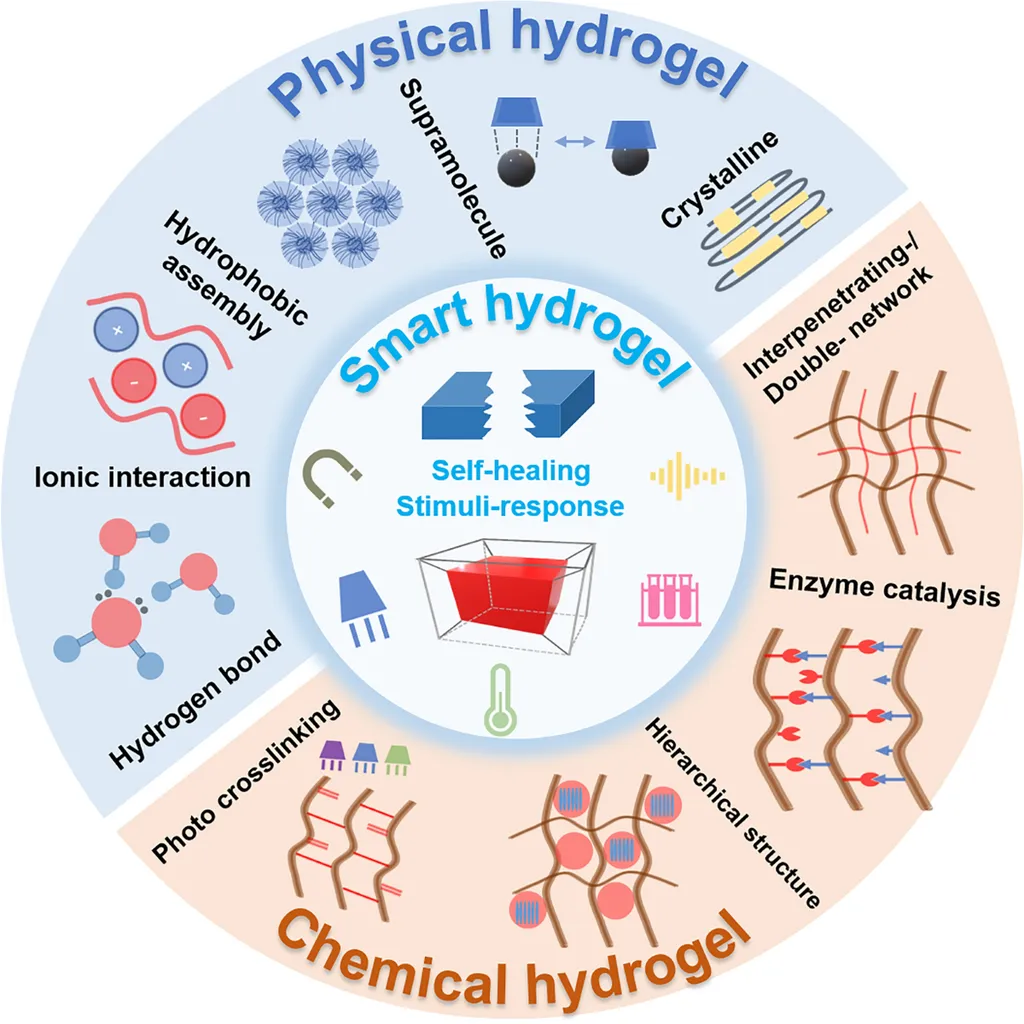In the ever-evolving landscape of biomedical engineering, a groundbreaking review published in the journal *Bioactive Materials* (translated to English as “Active Biological Materials”) is set to reshape our understanding of smart injectable hydrogels. Led by Qamar Salamat, a researcher affiliated with both Khazar University in Baku, Azerbaijan, and Erciyes University in Kayseri, Turkey, this comprehensive study delves into the multifunctional capabilities of chitosan-based smart injectable hydrogels (CS-SIHs), offering a beacon of hope for advanced drug delivery, regenerative medicine, and tissue engineering.
Chitosan, a biopolymer derived from chitin, has long been celebrated for its biocompatibility and biodegradability. When engineered into smart injectable hydrogels, it becomes a responsive platform that can react to changes in pH, temperature, and ionic strength. This responsiveness is a game-changer in the biomedical field, enabling controlled and localized therapeutic release. “These hydrogels mimic the extracellular matrix, fostering cell adhesion, proliferation, and differentiation,” explains Salamat. “This makes them ideal for applications ranging from bone regeneration to chronic wound healing.”
The review highlights recent advancements in CS-SIH formulations, emphasizing their enhanced bioactivity and mechanical integrity. These hydrogels can be encapsulated with various therapeutic agents, including proteins, nucleic acids, and small molecules, facilitating minimally invasive delivery. This innovation could significantly impact the energy sector, particularly in the development of advanced medical technologies that require precise and efficient drug delivery systems.
One of the most compelling aspects of this research is its focus on preclinical and translational studies. By systematically integrating the physicochemical properties, intelligent response mechanisms, crosslinking strategies, and biomedical applications of CS-SIHs, the review offers a coherent framework for future research and development. “We aim to provide a comprehensive overview of the challenges and opportunities in this field,” says Salamat. “This includes addressing regulatory hurdles and scalability concerns, which are crucial for translating these technologies into clinical practice.”
The potential commercial impacts of this research are vast. In the energy sector, the development of smart injectable hydrogels could lead to more efficient and targeted delivery of therapeutic agents, improving patient outcomes and reducing healthcare costs. Additionally, the adaptability of these hydrogels to dynamic microenvironments opens up new avenues for innovation in medical devices and regenerative therapies.
As the biomedical engineering field continues to evolve, the insights provided by Salamat and his team offer a roadmap for future developments. By addressing the challenges of clinical translation and scalability, this research paves the way for the widespread adoption of CS-SIHs in various medical applications. The review, published in *Bioactive Materials*, serves as a testament to the ongoing advancements in this exciting and rapidly growing field.

